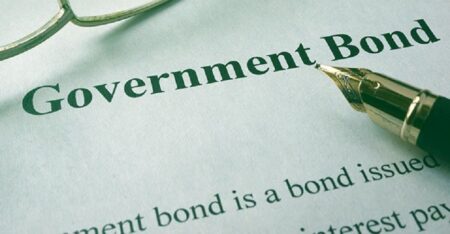BONDS are a way to loan money to governments or companies in return for interest. When you buy a bond, it will have a coupon rate (fixed interest rate), which will give you annual coupon payments. When the bond reaches maturity, you get your money back. That is, if you haven’t traded the bond before it reached maturity.
What makes a bond different to other investments like stocks is that it is far less risky and offers a stable income stream.
There are two main risks to consider when investing in bonds.
The first is the default risk. This is the risk that the issuer will go bankrupt before the bond matures and will be unable to pay back your full principal investment.
Almost all of this risk is avoided with a government bond, which means the coupon rate will be slightly lower, but you are all but guaranteed to get your investment back.
To make sure you’re minimising your risk, check bond ratings, which tell you how likely a bond issuer is to default. Anything from a AAA rating to a BBB- is considered ‘investment grade’ and a fairly safe bet.
The other risk you need to be aware of is the interest rate.
If you keep your bond until it reaches maturity, you’ll still receive your coupon payments, so you won’t be losing money. But where the market interest rate tops the coupon rate, the trading value of your bond goes down.
Here’s a slightly simplified example of how that works.
Say you bought a ten-year $10,000 bond with a coupon rate of 1.7 per cent last year. You can confidently expect $10,107 at maturity.
Because of market interest rate rises recently, this year a $10,000 ten-year bond comes with a 4 per cent coupon rate. The buyer can expect $10,400 at maturity.
That’s $293 more than you are getting, and it means that if you were to sell your bond on the market, you would likely get $10,000 minus $293 or $9,707. In that way, the buyer of your bond would effectively get the same interest rate as if they had bought a bond with a 4 per cent coupon rate.
If your aim is not to trade but keep your bond to maturity, you can be entirely sure to get $10,107. As if your bond were a term deposit.
As a small investor, you can only really buy bonds on the Australian Stock Exchange. The problem is, there are only a handful of bonds that trade on the Australian Stock Exchange (ASX).
However, you can also buy into bonds through instruments called exchange-traded bonds. The ASX provides a list of bonds that are available that way. The good thing is that prices are in line with wholesale markets, so you don’t pay over the odds.
Because you can trade there’s a huge variety of bonds you can buy. Current government bonds offer a coupon rate of anywhere from 0.25 per cent to 5.5 per cent with some reaching maturity next year and others in 30 years.
A huge advantage which bonds have over term deposits is that with a bond you can better time the maturity date.
Another advantage is the opportunity to sell bonds at a profit, but that’s another story.
